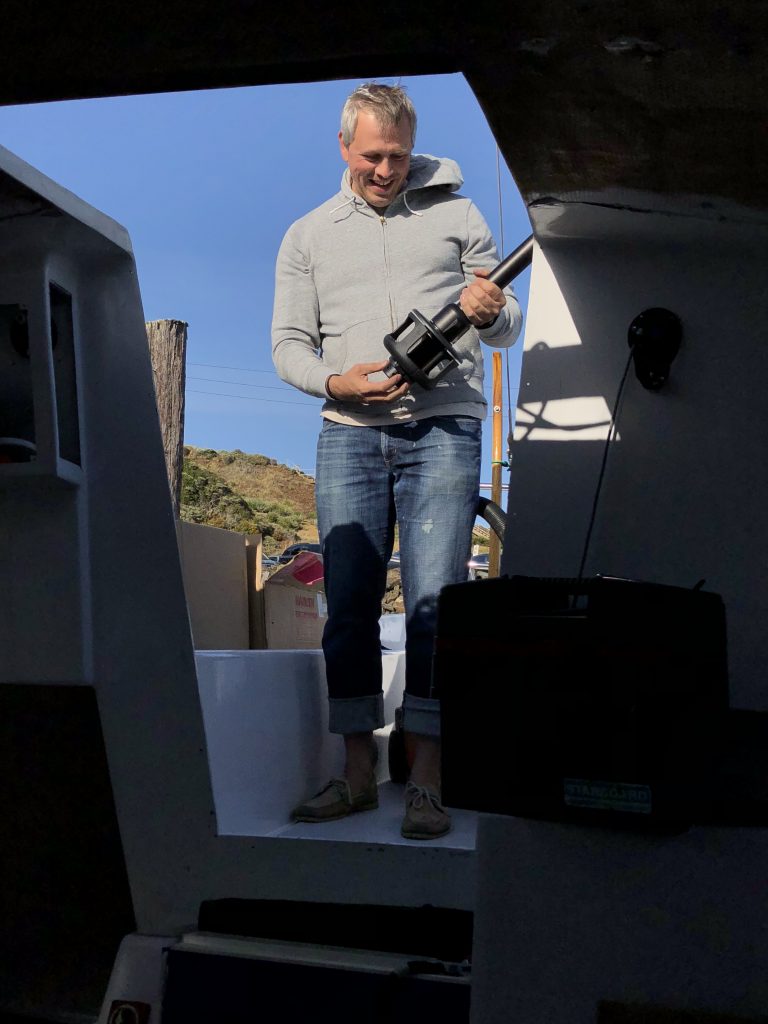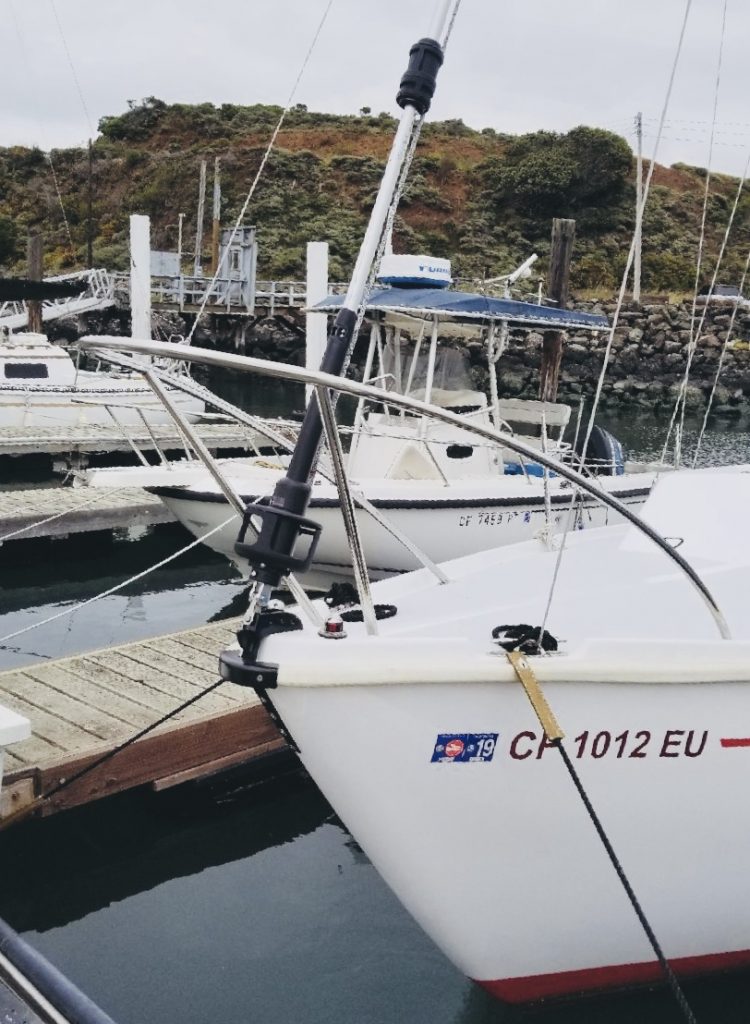Mast down
Most of the standing rigging was either loosened or removed first. Then, one of the yard workers was lifted up to put a noose around the mast.

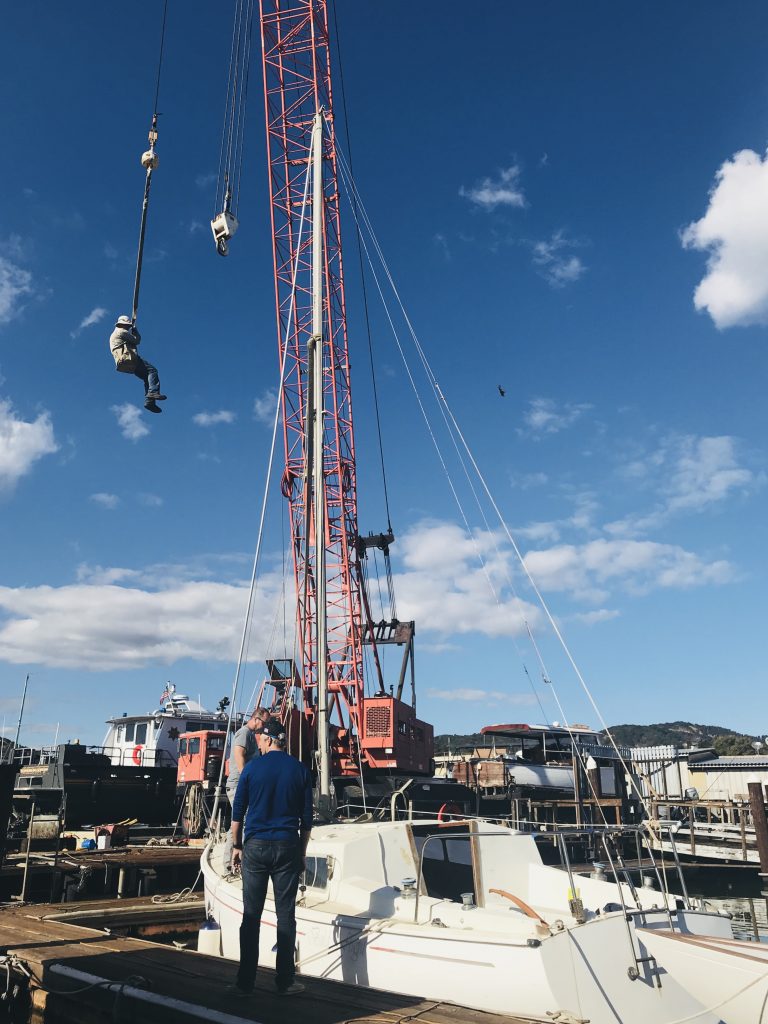
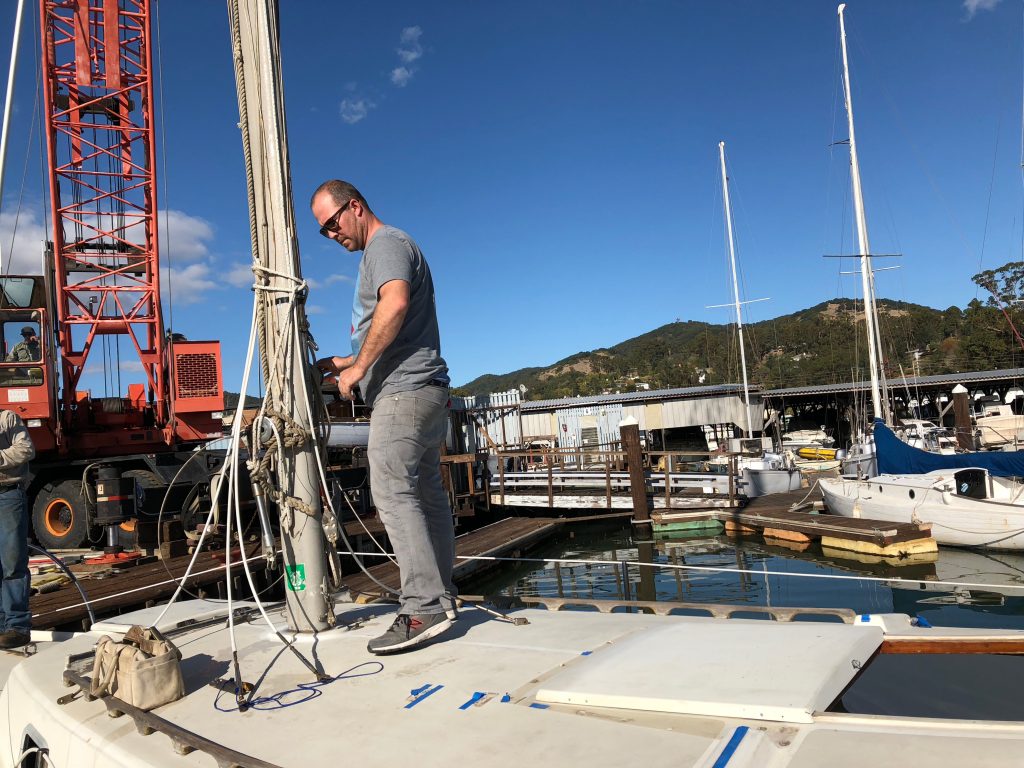
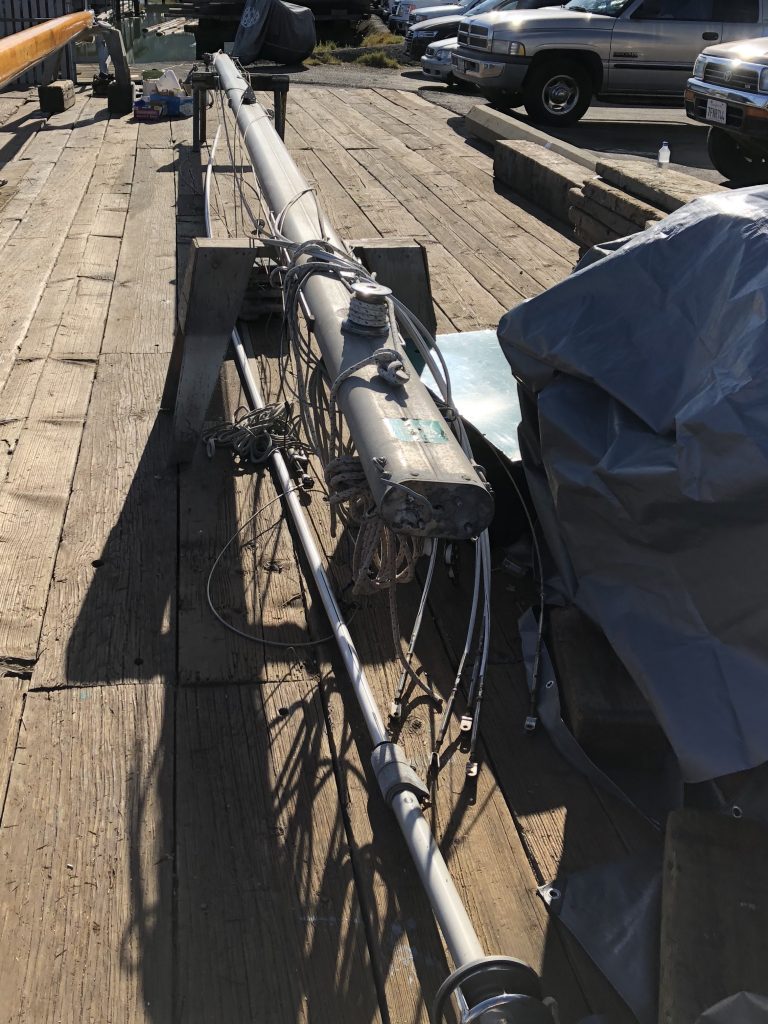
What I learned today:
- It’s possible to use jib halyard as forestay. When removing roller furler, the rigger just hooked jib halyard to steaming plate and I used the winch to tension it. Then we loosened and removed the forestay and the mast didn’t fall on our heads
- Mast needs proper drainage. When we lifted it, a few gallons of water poured from inside of it. Will need to make a few holes for draining water.

